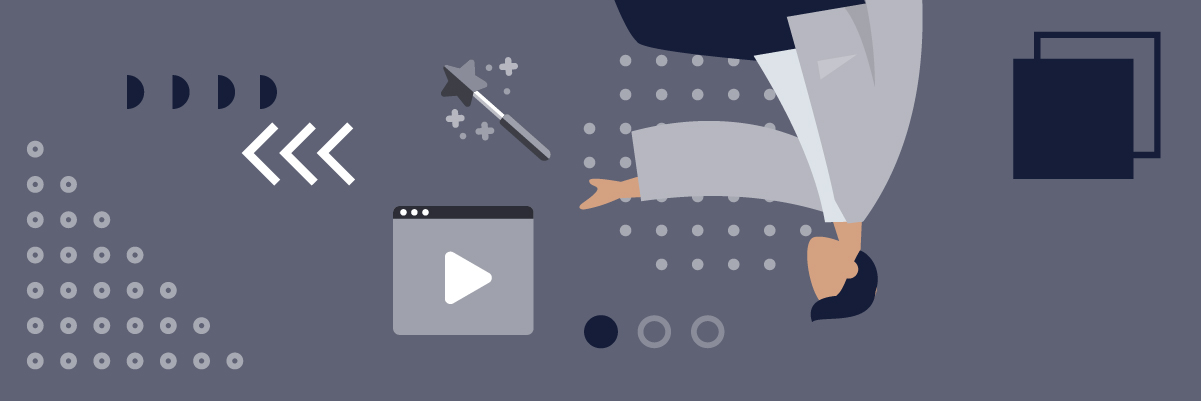Special effects have been around almost as long as movies themselves. And really, could you think about where the medium would be without FX creating new, heightened realities? Truly, we’ve come a long way from the old days of stop-motion and matte paintings to the full CGI see-to-believe magic of today. Today, we’ll learn all about the history and role of these visual tricks in film production.
And hey, there’s more to special effects than meets the eye (pardon the pun). If you’re interested in any aspect of film production, or if you’re an up-and-coming pro who would like to try their hand at FX, this article is also for you. Moreover, if you’re looking for high-end professionals who can help you with all areas of post-production, you’re also in luck.
We’re going to take a wide-ranging look at the world of special effects:
- What are they?
- What’s their history and where did they come from?
- You’ll learn some FX hallmarks, as well as how techniques evolved over time.
- And, finally, I’ll help you find jobs as an FX pro, as well as tell you where to hire the best in the biz.
Ready to get going? Let’s jam!

What Are Special Effects?
Special effects are illusions, or rather, a form of visual trickery. The idea is to deceive observers, and — if things work according to plan — create a convincing result that maintains suspension of disbelief.
Much like that one song, they’ve been around for a long, long year. Over time, we’ve seen them develop from mechanical or optical illusions into full-fledged digital effects that more accurately blur the line between reality and unreality. Or well, that’s the idea, anyway. You know you’ve seen your share of laughably bad special effects along with the great.
Over the course of history, special effects have been a way of expanding an artist’s creative vision. By being able to show what is not there, they were, in a way, able to paint with a broader and more expressive color palette. So, it would be a mistake to believe that FX are only there to provide a flashy, over-the-top spectacle. In the hands of a less-subtle director, sure; but, in the hands of a connoisseur, they can be so good you won’t even know they’re there.
So, special effects aren’t just there to create fantastic visions that could never occur in reality. They can also be there to augment what’s already there in ways that are so subtle not even the trained eye can tell easily. Thanks to the magic of techniques like compositing, even “non-FX” movies are more effects-laden than you might think.
Just check out this video for reference, and be promptly amazed:
A Brief History of Special Effects
The instance of what can be called special effects dates back to 1857. It was then that Oscar Rejlander combined sections of 32 different negatives into a single montaged combination print. By 1895, special effects had reached the nascent realm of cinema.
While filming a reenactment of the beheading of Mary, Queen of Scots, Clark instructed an actor to step up to the block in Mary’s costume. As the executioner brought the axe above his head, Clark stopped the camera, had all of the actors freeze, and had the person playing Mary step off the set. He placed a Mary dummy in the actor’s place, restarted filming, and allowed the executioner to bring the axe down, severing the dummy’s head. Techniques like these would dominate the production of special effects for a century.
Let me tell you, people were utterly taken aback at this. The innocent viewers, who were none the wiser, thought that a real beheading had taken place and there was an uproar. Of course, you could chalk this up as a victory for special effects; if they’re believable, then they’ve done their job well.
And FX continued to be a staple of the medium of cinema in the following years. From 1900 to 1910, cinema pioneer Georges Méliés discovered the following techniques over the course of 500 films:
- Matte paintings; hand-drawn illustrations that stood in for backgrounds.
- Stop tricks; a technique that allows filmmakers to “stop” time and splice in new things. “The ‘stop trick’ had caused a truck to turn into a hearse, pedestrians to change direction, and men to turn into women.”
- Time-lapse photography
- Multiple exposures, like those of Rejlander.
- Dissolves; gradual transitions from one image to another.
- Hand-painted images, and sometimes entire movies!
It’s Evolution, Baby
Of course, things didn’t stop there. From 1910 to 1920, Norman Dawn brought about huge improvements in matte shots. By minimizing exposure times, in combination with other techniques, he obtained much more natural shots.
By the 1930s, the film industry also produced many innovations in special effects. Rear projection allowed for moving backgrounds instead of just matte paintings; you’d be surprised how much filmmakers kept using rear projection more than 70 years later! In fact, new shows like Disney’s The Mandalorian use an extremely modern version of this trick, where they project backgrounds onto huge LED screens.
During the following years, many studios created their own “in-house” special effects teams. This led to the use of miniatures, stop-motion (as in Jason and the Argonauts), and animation to become staples of many film classics. Creators weren’t just limited to realistic scenarios anymore; they were free to play around with more high-flying ideas. Films like Fritz Lang’s Metropolis are a perfect demonstration of what happens when creativity and technical means intersect.
During this period, of course, special effects pros also improved pre-existing techniques as well as creating new ones. By the 1950s, there was a bonafide industry boom.
The Sci-Fi Explosion
Better-quality special effects also meant that stories didn’t have to be earthbound anymore. Coupled with the advent of color in movies, there was a glut of effects-heavy productions, with films like The Forbidden Planet leading the charge.
By the time the 1950s and 60s rolled along, the industry was chock-full of amazing sci-fi productions that created an even higher benchmark for special effects. Many TV shows (like the original Star Trek) and movies totally reshaped and revolutionized our understanding of what was possible.
By 1968, Stanley Kubrick gifted us 2001, a Space Odyssey, and the rest is history. If there’s one film that absolutely blew minds back then, it was that one. Well, save for 1977’s Star Wars, a small indie production you might’ve heard about. No? Doesn’t ring a bell? Well, it probably flew right under your radar.
But, all kidding aside, sci-fi became one of the champions of great special effects that pushed the envelope. And this happened even as the industry went through gradual, all-encompassing changes.
The 1970s provided two profound changes in the special effects trade. The first was economic: during the industry’s recession in the late 1960s and early 1970s, many studios closed down their in-house effects houses. Technicians became freelancers or founded their own effects companies, sometimes specializing on particular techniques (opticals, animation, etc.).
But, even in the mids of all this, people like George Lucas and Steven Spielberg were spearheading new developments in special effects. By creating companies like ILM (Industrial Light and Magic), they, along with others, continued to be at the forefront of innovation in the special effects trade.

CGI and Special Effects
Now, CGI is probably what first comes to mind when we think of special effects in the year 2021. Of course, this didn’t really happen overnight. While CGI had been in development for decades, it wasn’t until the late 80s and early 90s that they reached “peak” form.
Through the incredible VFX in films like Terminator 2, The Abyss, Jurassic Park, and many more, A-list filmmakers like Spielberg and James Cameron established CGI as a top-of-the-line solution. What was once the province of the impossible, became commonplace. In fact, it could be argued that by the mid-2000s we’d achieved a state of oversaturation when it came to computer-generated special effects.
Still, to this day, they are an integral part of any film production that’s worth anything. And that’s because CGI can:
- Augment reality, creating composites that are indiscernible from the real thing.
- Help bring about totally new creations. Characters like Gollum wouldn’t have been possible in an age before CGI.
- When well-done, it can do these in a way that’s just impossible with any other technique.
- Also, even though they can be expensive, they’re far cheaper to utilize than other techniques. Chalk that up to the industrialization of computer graphics technology, baby!
So, there’s a reason why they’re here, and they’re here to stay. I truly recommend Corridor Crew’s series about “Good and Bad CGI” to get a glimpse behind the incredible work and artistry behind digital special effects.
Here’s a sample for ya:
Where to Find Great Special Effects Pros
Now, maybe you’ve got a film or animated short in the works. Perhaps you’re running your very own video production, but are running into a few hurdles when it comes to the post-production part of things. Maybe it’s a combination of both of the above, none, or something else.
Regardless, if you’re looking for special effects specialists, I recommend you just give us a holler at Bunny Studio. We’ll take care of your top-to-bottom VFX needs, guaranteed.
Or maybe you’re a VFX pro who’s looking to make a name for themselves. If you’ve got the goods, then you’re in luck, because we’re accepting new freelancers into our ranks.
Reach out to us on this page. You can submit your portfolio and take a test to showcase your skills. If you pass, then it’s the good life for you, and we’ll have plenty of great projects coming your way in no time!










